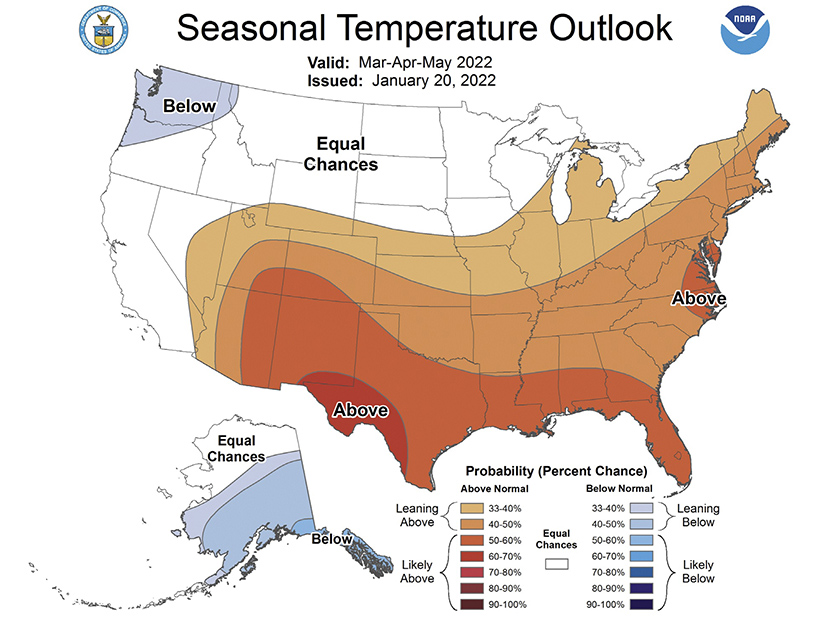In a now-familiar refrain, MISO is warning stakeholders of possible maximum generation emergencies should high load and high outages collide this spring.
Under probable load scenarios with expected outages, MISO expects to have:
- 99 GW of available capacity in March to cover an 88-GW peak demand estimate;
- 91 GW of available capacity in April to cover an 83-GW peak; and
- 101 GW of available capacity in May to cover a 91-GW peak.
However, the RTO said should elevated load and excessive outages enter the picture, it could find itself declaring an emergency to access its emergency-only resources in April and May. MISO said it doesn’t see itself exhausting its 12 GW of load-modifying resources and operational reserves, even in the direst situations.
In a worst-case scenario, the grid operator would have just 79 GW of non-emergency capacity in April should demand reach 88 GW. Under the same scenario in May, MISO would have 95 GW of capacity to handle a 104-GW demand peak. In both cases, staff would be forced to access emergency supplies.
MISO set its all-time spring peak of 111 GW in May 2018.
Over the past five years, the RTO has experienced an average 36.3 GW of forced and planned outages during spring monthly peaks. It saw its highest on-peak spring outages at 54.2 GW in April 2019.
MISO did not alter this year’s spring reliability outlook to include the loss of its firm contract path linking its Midwest and South regions through June 30. Staff said it wasn’t necessary to factor the line loss into its forecasts because it was unlikely to cause any operational impacts. (See MISO Midwest-South Transfer Service on Outage until July.)
The National Oceanic and Atmospheric Administration predicts higher-than-average temperatures for MISO South and a chance at higher temperatures across most of the Midwest, except for the northernmost portion of the footprint. NOAA also expects much of the Midwest to experience more precipitation than usual.
MISO ended winter without the serious reliability event it was steeling itself for. The grid operator had a 100.2-GW winter peak on Jan. 21, 2022, about 9 GW short of the all-time winter peak set in early 2014 during a polar vortex.


